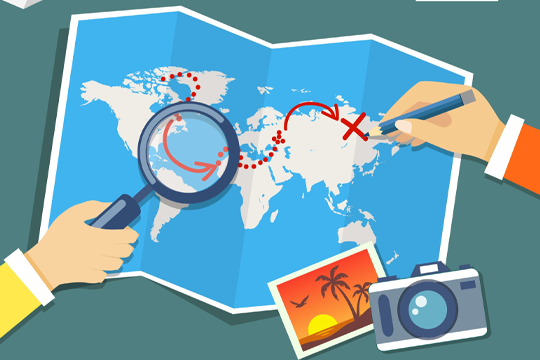Is there an AI travel planner?
What if there was a way to streamline the process and make it more personalized than ever before? Imagine an…
Banking-as-a-Service (BaaS) has emerged as a game changer, bridging the gap between traditional financial institutions and nonbank firms. This paradigm change is not only altering how financial services are offered, but it is also playing a critical role in fostering global financial inclusion.
Recent data emphasises the relevance of this tendency. According to the World Bank, over 1.7 billion adults worldwide are unbanked, meaning they do not have access to basic financial services. Furthermore, many businesses, particularly startups and fintech enterprises, are having difficulty navigating the complicated regulatory framework and infrastructural needs connected with creating their own banking capabilities. This is where Banking-as-a-Service comes in, providing a collaborative and innovative solution to these difficulties.
According to Gartner, BaaS will become commonplace in the next two years. According to the survey, by the end of 2024, 30% of banks with assets surpassing $1 billion will use BaaS to generate additional revenue.

Banking-as-a-Service (BaaS) is a revolutionary financial paradigm that allows nonbank entities such as fintech startups, e-commerce platforms, and other enterprises to provide a variety of banking and financial services to its consumers without the need for them to become licenced banks themselves. These nonbank enterprises can have access to APIs and technology solutions provided by established financial institutions via BaaS. This enables companies to offer services such as payments processing, account management, lending, and more while using the collaborating bank’s infrastructure and regulatory compliance. BaaS not only accelerates financial sector innovation, but it also improves access to financial services, boosting financial inclusion for individuals and enterprises who may have previously been excluded from traditional banking channels.
By providing third-party actors greater access to banking data and services, BaaS is a critical pillar of open banking, supporting financial transparency and driving innovation. BaaS facilitates the creation of unique and tailored solutions that may be brought to market more quickly by merging non-banking enterprises with regulated financial infrastructure. Strong BaaS solutions can pave the way for better collaboration and customer-centric financial solutions.
API-driven Technology: At the heart of BaaS is the utilization of Application Programming Interfaces (APIs). These APIs enable seamless communication between the nonbank entity and the partnering financial institution’s systems. They facilitate the secure exchange of data and transactions, allowing nonbank companies to integrate banking services directly into their platforms or applications.
Regulatory Framework: BaaS relies on a strong regulatory framework that governs the collaboration between nonbank companies and traditional financial institutions. While nonbank entities can offer financial services through BaaS, they do so under the umbrella of the partnering bank’s regulatory compliance. This ensures that the services provided are in line with industry standards and regulations, safeguarding consumer interests.
Scalable Infrastructure: BaaS requires a robust and scalable infrastructure to support the seamless delivery of financial services. This includes the technical infrastructure for data storage, processing, and security, as well as the operational infrastructure to handle customer interactions, transactions, and account management. The partnering bank’s established infrastructure forms the backbone of BaaS, enabling nonbank companies to offer reliable and efficient services to their customers.
These three elements, API-driven technology, a well-defined regulatory framework, and a scalable infrastructure, collectively empower nonbank companies to offer a diverse range of financial services without the complexities and regulatory hurdles associated with becoming licensed banks themselves. The synergy between these ingredients not only accelerates innovation in the financial sector but also opens doors for greater financial inclusion and accessibility.
According to Grand View Research, the banking-as-a-service industry was worth $19.65 billion in 2021 and is predicted to grow at a 16.2% CAGR between 2022 and 2030. This growing market size can be due to reasons such as rising demand for financial services, increased digitization, and the widespread availability of Application Programming Interfaces (APIs). These expanding Banking as a Service trends project the increasing demand for BaaS and how nonbank enterprises can use BaaS solutions to acquire a competitive business edge in the evolving financial ecosystem.

Nonbank companies stand to gain numerous benefits from embracing the innovative model of Banking-as-a-Service (BaaS). This transformative approach revolutionizes the way these entities engage with the financial landscape, enabling them to provide a wide range of banking and financial services to their customers without the need for a full banking license.
Accelerated Innovation: BaaS empowers nonbank companies to swiftly integrate advanced financial solutions into their platforms. By accessing the APIs and technological infrastructure of established financial institutions, these companies can offer cutting-edge services such as digital payments, lending, investment products, and more. This accelerates innovation within the financial sector while enhancing the customer experience.
Reduced Costs and Resources: Building and maintaining a full-fledged banking infrastructure demands significant resources, time, and capital. BaaS eliminates this need by allowing nonbank companies to tap into existing banking systems. This significantly reduces operational costs, enabling these companies to allocate resources more efficiently toward improving their core products and services.
Regulatory Compliance Made Simple: Navigating the complex regulatory landscape of the financial industry can be daunting for nonbank entities. BaaS alleviates this challenge by allowing them to operate within the regulatory framework of partnering banks. This ensures that their services are compliant, secure, and aligned with industry standards, eliminating the need to navigate the intricacies of regulatory requirements independently.
Enhanced Customer Engagement: By integrating financial services seamlessly into their offerings, nonbank companies can enhance customer engagement and loyalty. Whether it’s providing convenient payment solutions, personalized financial recommendations, or simplified lending processes, BaaS enables a more holistic customer experience that extends beyond traditional offerings.
Faster Time-to-Market: Developing banking services from scratch can be time-consuming. BaaS expedites the time-to-market for nonbank companies by providing ready-to-use financial solutions. This agility enables them to respond quickly to market demands and capitalize on emerging opportunities.
Financial Inclusion: BaaS plays a vital role in fostering financial inclusion. By extending banking services through non-traditional channels, BaaS empowers underserved populations, startups, and small businesses with access to essential financial services. This inclusivity contributes to broader economic growth and stability.

Finally, Banking-as-a-Service (BaaS) has ushered in a new era of opportunities for nonbank enterprises, thrusting them into the centre of the financial services sector. This ground-breaking concept shows the power of partnership between traditional financial institutions and nimble, tech-driven entrepreneurs, with the common objective of providing accessible and inclusive financial services to a worldwide audience.
Nonbank enterprises can avoid the hurdles of developing a banking infrastructure from the ground up by using BaaS. Instead, they can concentrate on what they do best: innovate, create, and meet the specific demands of their clients. These organisations improve customer experiences and enable underserved communities to engage in the financial ecosystem by seamlessly integrating banking services into their platforms.
The synergistic interaction between established banks and nonbank businesses emphasises the financial industry’s dynamic nature. BaaS not only speeds up innovation, but it also blurs the distinction between traditional banking and innovative technology. As the adoption of BaaS grows, regulatory landscapes may evolve to assure consumer protection and industry stability, supporting an atmosphere conducive to growth and innovation.

What if there was a way to streamline the process and make it more personalized than ever before? Imagine an…

In the dynamic landscape of modern business, customer engagement stands as a cornerstone for success. With the evolution of technology,…

Users can select from a wide variety of applications in the competitive mobile application industry to find one that best…